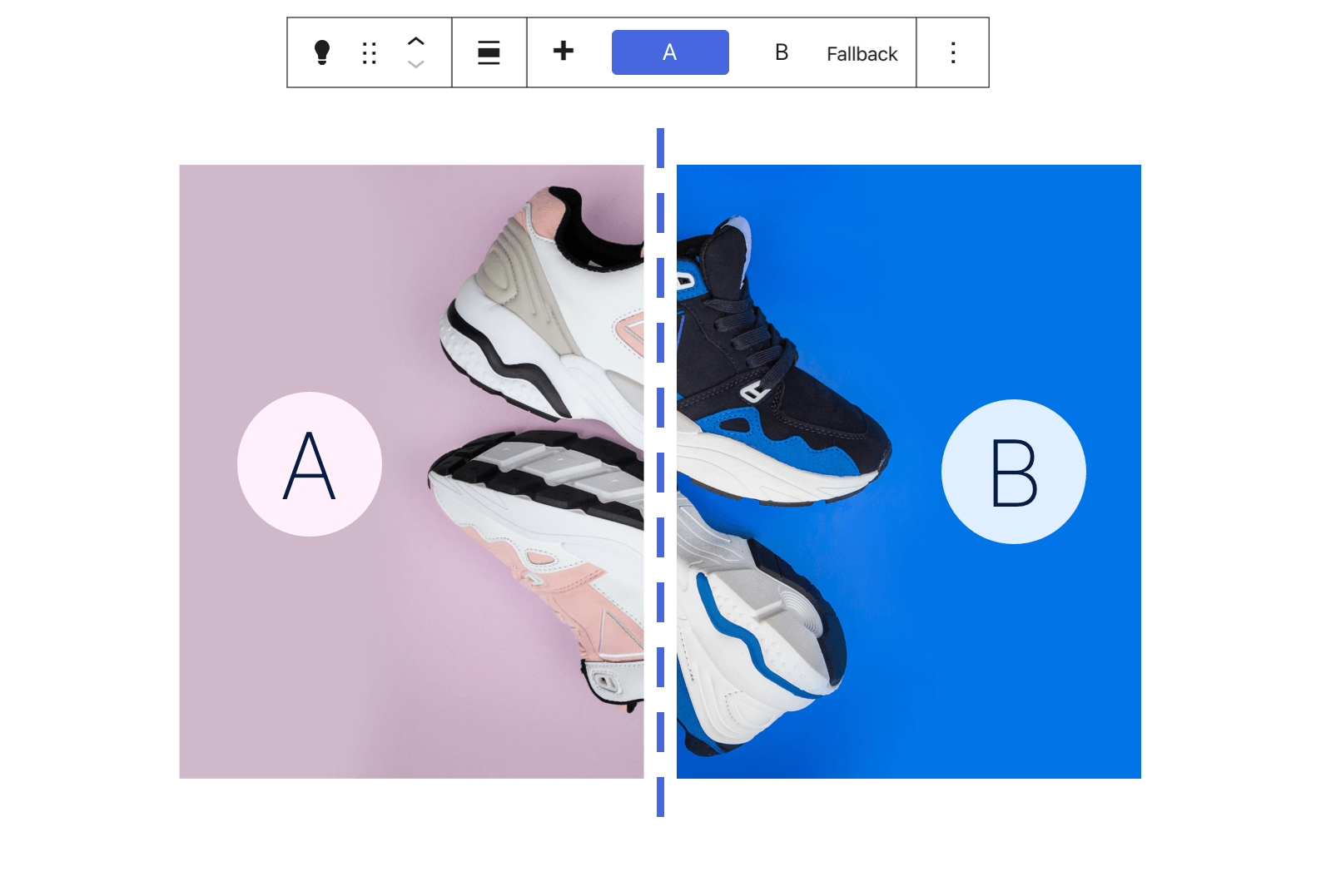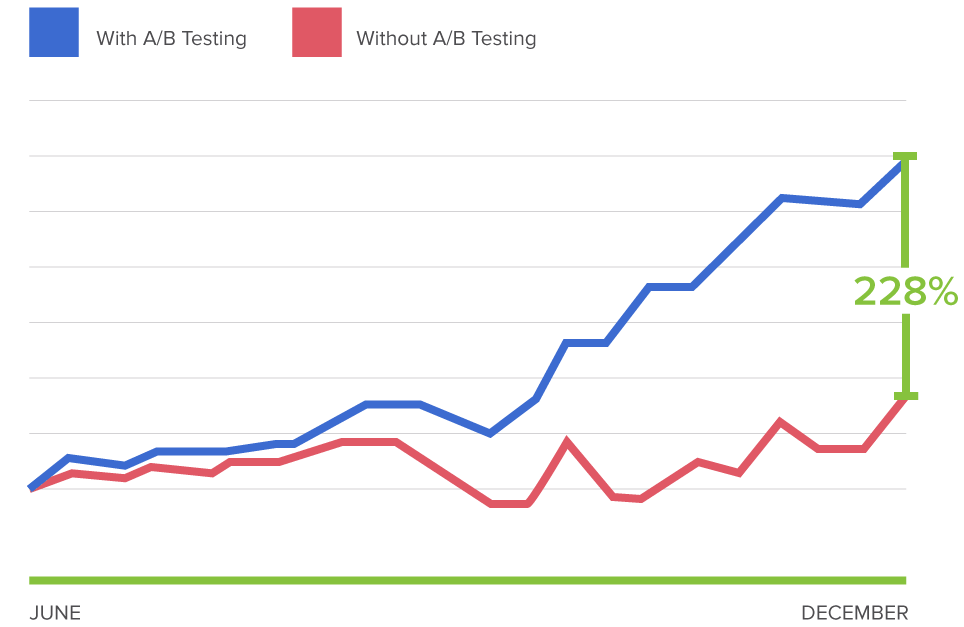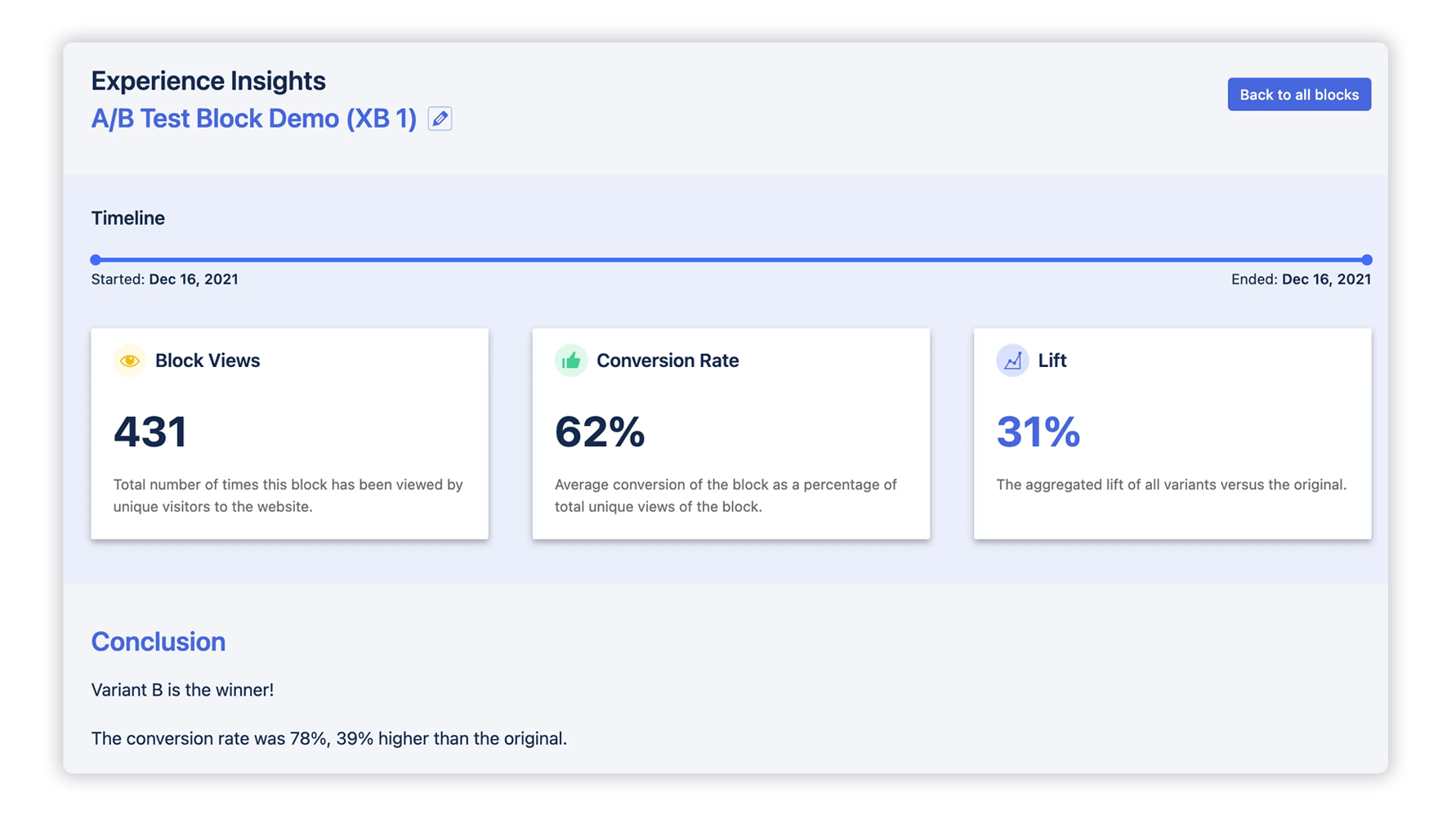Everything comes down to data. For digital marketers, this can be a poisoned chalice. We all want the room to flex our creative muscles – but similarly, we appreciate the value that good data brings to the table.
A perfect example of where creativity and data exist in perfect harmony is A/B or split testing. This technique allows digital marketers to use creativity to create two versions of something (i.e. an ad or piece of campaign creative), and then tangibly measure their effectiveness.
It’s a fantastic weapon in a digital marketer’s arsenal, especially as we move towards digital experiences that are increasingly personalized and customized to an individual customer’s needs and wants.
And there are various types of split testing to consider, each with its own benefits:
- A/B testing: Digital marketers select an element of a web page to test against only one other variation. It can be something as small as a subscribe button, or a more significant element, such as a banner ad. Two versions are created and tested to determine which is most successful.
- Multivariate testing: Taking A/B testing to the next level, multivariate allows marketers to experiment with and compare multiple variables, rather than just focusing on one element. By incorporating a higher number of variables, more insight is revealed into how well these variables are interacting with each other. The difficulty with testing multiple variants is the requirement of even more traffic to reach statistical significance in determining the winner.
The opportunities afforded by A/B and multivariate testing are equal parts exciting and daunting for digital marketers. Exciting because you can tangibly measure the impact of your work and improve it accordingly (a feedback loop we often lack in marketing), but daunting because it can be easy to fall down the testing rabbit hole – how deep do you go?

WordPress + A/B and multivariate testing: is it even possible?
For companies who operate on WordPress, there are numerous options for dipping your toe in the testing waters. There are various plug-in offerings, but they’re often expensive, and most are difficult to integrate with other tools in the marketing tech stack, such as your analytics.
Everything is housed in one place – with data that’s easy to track, interpret, and present.
Many brands opt to use a holistic digital experience platform – specifically designed on WordPress to seamlessly integrate with all its various functionalities – to dive even deeper into their testing capabilities.
And because everything is housed in one place – with data that’s easy to track, interpret, and present – there’s no danger of falling down that confusing rabbit hole.

A/B testing vs Multivariate testing vs Split testing
When it comes to testing, there is no winner between split and multivariate testing. They each have their place in the marketing experimentation game.
Where split testing is useful for easily gathering simple data quickly, a multivariate approach requires large amounts of traffic to generate results, which can be time-consuming, particularly for smaller brands with a smaller digital footprint.
However, with time and patience, multivariate testing can provide a deeper level of insight than split testing, enabling digital marketers to make more sophisticated changes to target redesigned elements of a page where they’ll make the highest possible impact.
- Common uses of split testing: Typically used to playoff two distinctive design directions against each other – for example, a campaign landing page that’s geared towards eye-catching visuals versus an alternative version that focuses on written content to inform.
- Common uses of multivariate testing: Where several elements are in discussion – for example, a campaign landing page that features a headline hook, a download CTA, and a banner visual.
Pageviews can vary by as much as 500% depending on your headline.
While basic split testing is available through native WordPress, multivariate is another matter. That’s why digital experience platforms are so important if digital marketers are serious about delving deeper into the testing playground.
By identifying winning combinations of headings, author style and tone, image, video, and text to specific groups and target audiences, marketers can better cater to their unique needs.
Define your testing: Optimize your website testing
The most important consideration for digital marketers is how they interpret the results of each test, and what they actually do about it. It’s all well and good creating two pieces of creative, but unless you have a clear idea of what you’re going to measure, and how you’re going to optimize based on those results, then your A/B test will be largely useless.
For example, if you were pitting subscription buttons against each other (each with different copy), you would measure the success of the test based on click-throughs.

The positive effects of A/B testing are felt over the long term. Image source: Optimizely
But, if you wanted to measure the effectiveness of a specific landing page, you may want to change your measure of success. Is the page meant to inform and create authority? Then dwell time is perhaps a better KPI to track.
However, if you’re looking to use the page as a stepping stone towards gated content, then again, click-throughs will be your MVP – but, importantly, the click-through must be directed to the right page, where you want your conversion to take place.
Better UX design due to A/B testing can increase conversion rates by 400%
All these success criteria, such as engagement time, CTRs, newsletter sign-ups, downloads and video plays, can be set, tracked, and visually presented to inform marketers what’s driving engagement and value for specific audiences.
Clearly, the benefits of A/B testing are self-fulfilling. Let’s say you’re launching a new campaign, and have put together two landing pages. A/B testing allows you to measure which web page is receiving more engagement (click-through, dwell time, conversion rate etc.), so you can optimize and prioritize the better-performing page moving forwards.
Optimize WordPress: Next-level testing with Experience Blocks
If you just paddle around in the shallows, A/B testing can be pretty simple. But simple only gets you so far.
It’s when you start measuring the effectiveness of certain pieces of creative against specific audience segments or breaking it down to measure specific blocks of content that the potential of A/B testing jumps to another level.
Using different variables and audiences, you can create literally dozens of variations of campaigns, content, and creative.
Within Altis, split testing is run on a specific block type known as ‘Experience Blocks’. These interchangeable elements on your website enable teams to track user interactions at a WordPress content block level, independent of the page, in order to gain granular level feedback to inform decision-making.
You can even tailor on-page content to pre-built audiences and automatically optimize your content based on results when enough traffic has been generated.
For example: is one piece of creative performing better in the UK compared to North America? Does your Retail audience engage with an article more than your Manufacturing segment? Using the data collected from these tests to optimize which content and creative your users are seeing can help enormously in creating a more personalized and relevant online experience for website visitors.

And remember, these examples are still relatively simple. Using different variables and audiences, you can create literally dozens (if not more) variations of campaigns, content, and creative.
Take your digital marketing up a notch
If that’s making your head spin, don’t worry – because that’s exactly why digital experience platforms that possess advanced testing options are so important, especially if you’re using one built on WordPress.
These platforms are designed specifically to integrate with all WordPress functionalities, meaning digital marketers can do all of the above, but still make sense of it all, because it doesn’t take extensive back-end knowledge or WordPress expertise to set up and understand.
The power of A/B testing is clear, but most marketers are only scratching the surface when it comes to its potential.
The ability to test behavioral and engagement responses to numerous variations and across numerous audiences will play a key role in the evolution of providing personalized content and experiences to our customers.
And, most excitingly, the tools are out there to allow digital marketers to get started today.
Want to get started with automated A/B testing on WordPress? We’d love to show you how.

